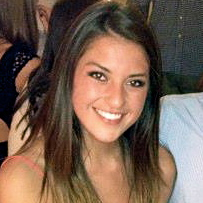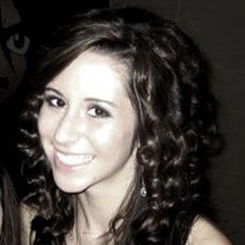By Laura Hough

Clockwise from top left: a cafe maurochino, a cafe shakirato, a latte, and my empty cup after I couldn’t stop drinking the cafe maurochino!
I know I already mentioned coffee in one of my posts, but a paragraph doesn’t do Italian coffee justice. Italians love coffee. It completely permeates the culture and they drink it all the time. That being said, there are an awful lot of rules about coffee drinking in Italy. In the U.S., especially on college campuses, you order what you want, when you want it, and then you drink it. One Wednesday night I learned all about drinking coffee in Italy from one of Umbra’s food science professors, and a lot of fun facts about coffee too.
Coffee was originally discovered by a goat herder in Ethiopia, who noticed one day that his goats were really hyper after eating some seeds. Somehow, that led to discovering that grinding said seeds and then soaking them in hot water made a delicious drink that would also make humans hyper. Coffee was first commercially grown in Yemen, on the Arabian Peninsula. The Islamic world started drinking it, probably because they don’t drink alcohol, as per the rules of their religion.
Coffee managed to get to Venice, which was a bustling port in the Middle Ages. It was originally sold in pharmacies as a cure-all: If you couldn’t sleep, drink some coffee. If you couldn’t stay awake, drink some coffee. If you had stomach pains, drink some coffee. It got so popular that even a pope weighed in, and said it was OK for Christians to drink coffee.
Fast forward to modern Italy. Coffee, and I mean great coffee, is on every street corner, available in every bar and café. They call it some different names, though, so if you’re ordering coffee in Italy, keep these tips in mind:
“Un café” will get you a shot of espresso. I am not a fan — it’s strong and dark and bitter, and makes me want to gag. It’s also only about a shot’s worth of coffee.
“Un café Americano” will get you a watered down espresso. It’s as close to a regular cup of coffee as it gets, and then you can add sugar.
Don’t make the mistake of ordering “un latte,” because you will get a funny look, and then receive a warm cup of milk. That’s what latte is in Italian — milk.
Instead, you either want a “un latte machiato” or “un café macchiato.” “Macchia” is Italian for stain, so when you order “un latte machiato,” you get milk with a stain of coffee, while “un café macchiato” is coffee with a stain of milk.
You can also order a cappuccino in Italy, but only do so in the mornings for breakfast. The Italians believe that the milk will fill you up, so you don’t want to drink it after noon, otherwise you won’t be hungry. Fun fact about a cappuccino: It’s named after the capuchin monkey, the black and white creature from South America. Those were named after an order of monks, known as Capuchin. These monks wore a black and white hood, and a cappuccino, with espresso, then milk, and then the foam on top sort of resembles a capuchin monkey.
Another excellent coffee drink is “un café shakirato.” It’s a shot of espresso, lightly sweetened and shaken with ice until it’s all foamy on top. It’s delicious. Unfortunately, if you order one in the wintertime, you will receive odd looks, because the Italians believe if you drink something chilly in the winter, you will die. I’m thinking about doing it anyway, because it’s delicious.
The last drink I have for you is called “un café maurochino.” It’s a coffee in a glass rimmed in cocoa powder. It’s also quite delicious, and perfectly acceptable to drink in the winter because it’s hot. Mine was the perfect balance of coffee and chocolate flavor.
But, even with all the variations, my Italian friends told me, “If you don’t like espresso, you don’t like coffee.” I’m definitely still working on drinking espresso like a real Italian (no sugar, no cream), but I’m really enjoying it all. And hopefully, when you get to Italy, you will manage to order exactly what you want!


















 Laura Hough is studying international studies and anthropology at the University of Missouri. She is spending the 2013 spring semester at the
Laura Hough is studying international studies and anthropology at the University of Missouri. She is spending the 2013 spring semester at the  Stephanie Hornstra is studying business administration with an emphasis in marketing at the University of Missouri. She is spending the 2013 spring semester at
Stephanie Hornstra is studying business administration with an emphasis in marketing at the University of Missouri. She is spending the 2013 spring semester at  John Mitchell is studying political science, Arabic and international studies with an emphasis in Middle Eastern studies at the University of Missouri. He is spending the 2013 spring semester in Amman, Jordan, on the
John Mitchell is studying political science, Arabic and international studies with an emphasis in Middle Eastern studies at the University of Missouri. He is spending the 2013 spring semester in Amman, Jordan, on the  Brittney Durbin is studying international studies at the University of Missouri. She spent the 2012 fall semester in Alicante, Spain, on the CIEE Liberal Arts Program.
Brittney Durbin is studying international studies at the University of Missouri. She spent the 2012 fall semester in Alicante, Spain, on the CIEE Liberal Arts Program.  Jantsen McBride is studying nutritional science at the University of Missouri. She spent the 2012 fall semester at
Jantsen McBride is studying nutritional science at the University of Missouri. She spent the 2012 fall semester at  Ashleigh Bello is studying international studies with an emphasis in Latin American studies at the University of Missouri. She spent the 2012 spring semester in South Korea on the
Ashleigh Bello is studying international studies with an emphasis in Latin American studies at the University of Missouri. She spent the 2012 spring semester in South Korea on the  Cassi Greenlee is studying accounting at the University of Missouri. She spent the 2011 fall semester at the
Cassi Greenlee is studying accounting at the University of Missouri. She spent the 2011 fall semester at the  Morgan Halane is studying English at the University of Missouri. He spent the 2011 fall semester at
Morgan Halane is studying English at the University of Missouri. He spent the 2011 fall semester at  Maddie Blasberg is studying English, Spanish and journalism at the University of Missouri. She spent the 2011 spring semester at la Universidad Nacional de Cuyo, in Mendoza, Argentina.
Maddie Blasberg is studying English, Spanish and journalism at the University of Missouri. She spent the 2011 spring semester at la Universidad Nacional de Cuyo, in Mendoza, Argentina.
You must be logged in to post a comment.